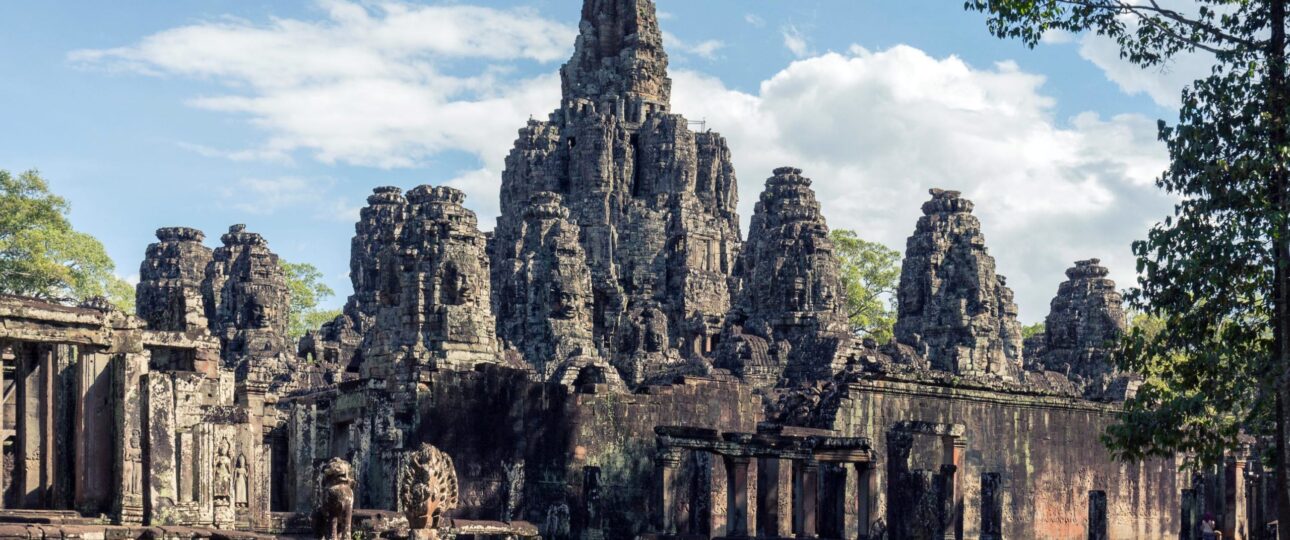📜 Name Origin:
- The name “Bayon” likely comes from the Pali word “Vejayant”, referring to Vejayanta, the celestial palace of the Hindu god Indra.
- In Khmer, it is known as Prasat Bayon (ប្រាសាទបាយ័ន), meaning “Bayon Temple.”
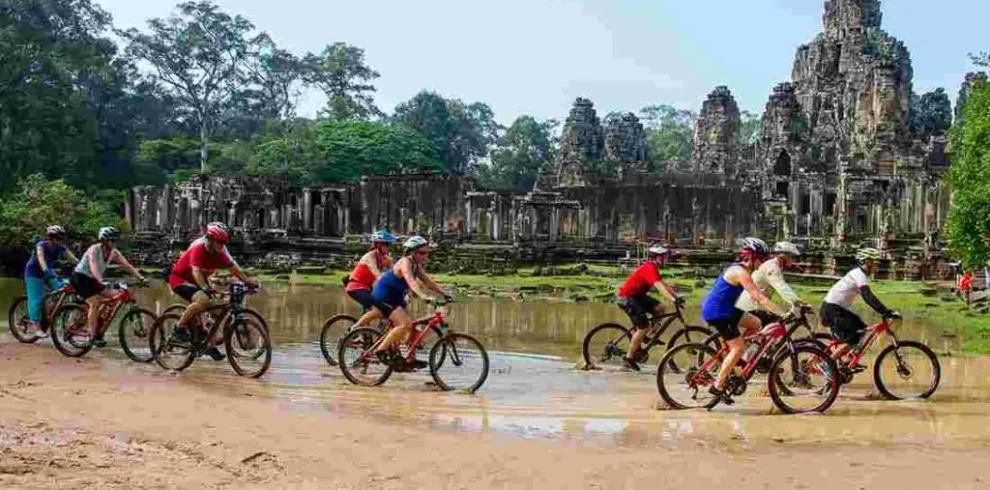
Experience history in motion as you embark on an active bike tour through the expansive Angkor Archaeological Park. Pedal along…

Escape the bustling city and immerse yourself in the genuine experience of authentic Cambodian village life, exploring vibrant local markets…

Experience a peaceful and scenic kayaking tour as you glide gently through the lush mangroves of Kampong Phluk. Paddle at…
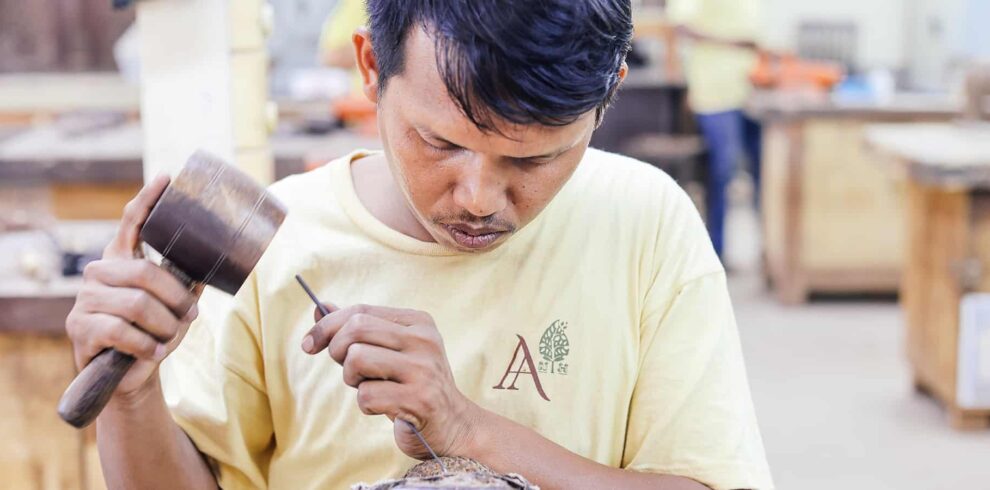
Experience a unique blend of rich heritage and vibrant creativity by combining an enriching visit to the magnificent Angkor temples…

Explore the deeply spiritual heart of Cambodia by taking an unforgettable journey to Phnom Kulen. This sacred mountain is not…
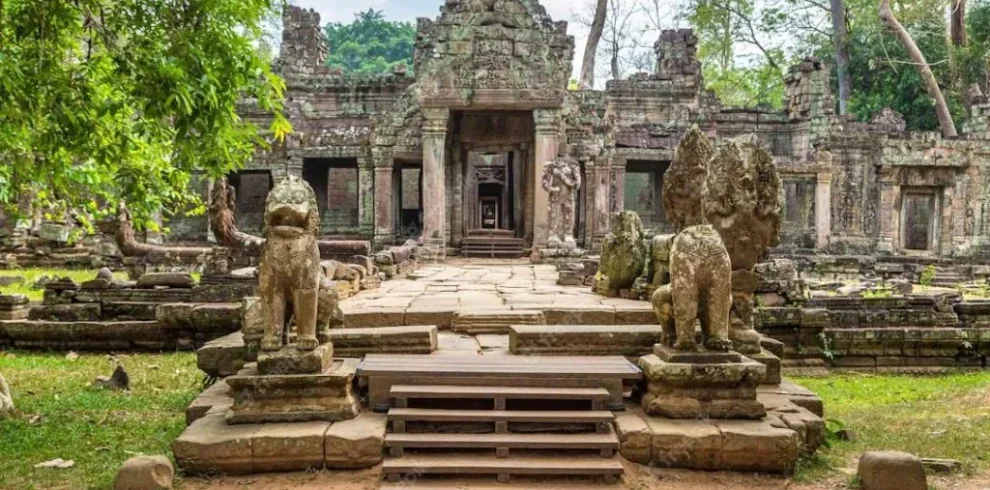
Discover the lesser-known yet incredibly stunning temples that make up Angkor’s Grand Circuit. This route is perfect for travelers who…
Deep in the heart of ancient Angkor Thom, beyond mighty gates and jungle-lined roads, rises a temple unlike any other. It doesn’t reach toward the heavens like Angkor Wat, nor hide beneath tree roots like Ta Prohm. Instead, it watches.
Bayon Temple is known as the “Temple of Faces.” Step inside, and you’re greeted by dozens of serene stone faces, smiling silently from every direction. No matter where you walk, you’ll feel as if you’re being watched—not in fear, but in peace. As if the temple itself is alive.
Built by the legendary King Jayavarman VII in the late 12th century, Bayon wasn’t just a temple. It was the spiritual heart of his empire—a Buddhist sanctuary standing proudly in the middle of Angkor Thom, his great capital city.
But here’s where the story gets more mysterious…
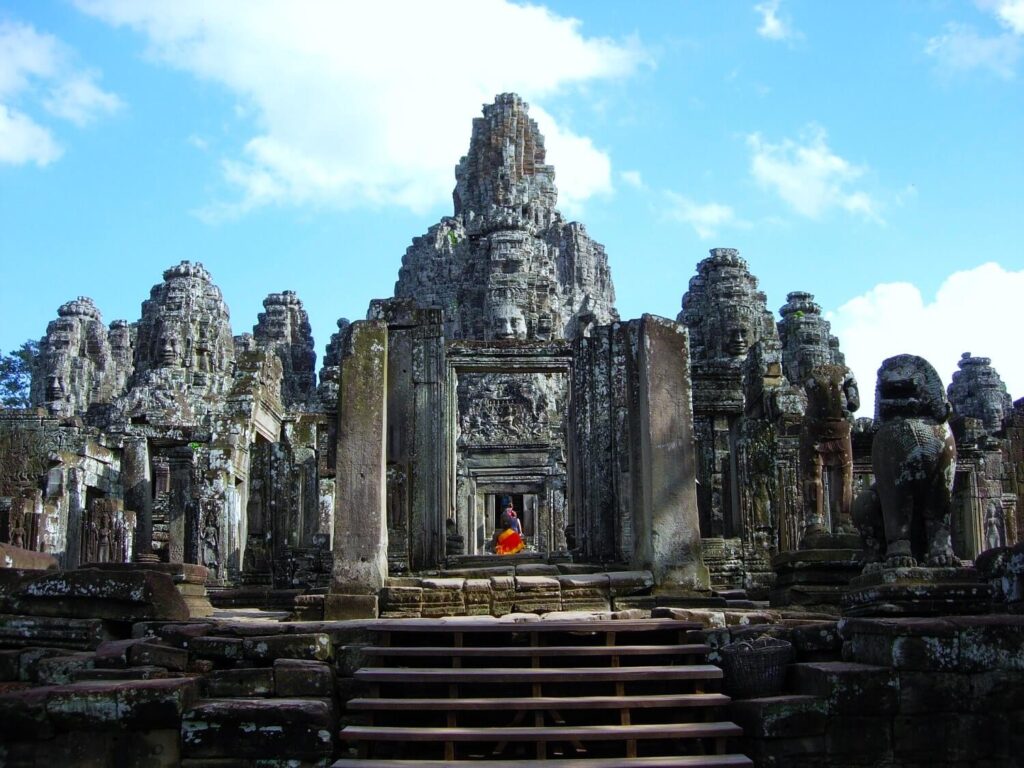
No one knows exactly who the faces represent. Some say they are the face of Avalokiteshvara, the bodhisattva of compassion. Others believe they are portraits of Jayavarman himself, carved into eternity as a god-king. With more than 200 faces carved into stone towers, it’s easy to lose count—but impossible to forget them.
As you walk through Bayon, take your time. Look up. Smile back. Wander through the bas-relief galleries, where lively carvings tell stories of ancient life—battles, markets, fishing trips, even a royal naval parade. These are the echoes of a civilization that once ruled all of Southeast Asia.
Bayon isn’t just a temple—it’s a living puzzle, a place of whispers and wonder, where stone smiles have outlasted empires.
🎧 “The eyes may be stone, but they see. The smiles may be carved, but they feel.”
📍 Location:
- Center of Angkor Thom, the ancient capital city built by King Jayavarman VII
- Just north of Angkor Wat, within the Angkor Archaeological Park, Siem Reap, Cambodia
🧠 Symbolism & Architecture:
- Giant Stone Faces:
- Each tower features 4 serene, smiling faces facing cardinal directions.
- Believed to represent either Avalokiteshvara (Bodhisattva of compassion) or the king himself, deified as a god-king.
- Bas-reliefs & Carvings:
- Beautiful narrative panels showing daily life, battles, religious processions, and even markets and cockfights.
- Unique among Angkor temples for blending historical realism with spiritual themes.
- Design Style:
- Unlike the symmetry of Angkor Wat, Bayon appears more chaotic and maze-like, symbolizing the mystical center of the universe.
- The central sanctuary rises above the rest, surrounded by 3 enclosures.
🌄 Why Visit Bayon?
- Experience the famous “Face Towers”—a true icon of Khmer art.
- Walk through richly detailed bas-reliefs showing life in ancient Angkor.
- Feel the mystical aura of the central sanctuary.
- Often less crowded than Angkor Wat during early mornings or late afternoons.
📸 Tips for Visitors:
What to Bring: Comfortable shoes, a camera, and a quiet mind to take in the temple’s energy.
Best Time to Visit: Early morning or late afternoon for soft lighting and fewer crowds.
Don’t Miss: The central tower, the south gallery carvings, and the full 360° face views from the upper terrace.
